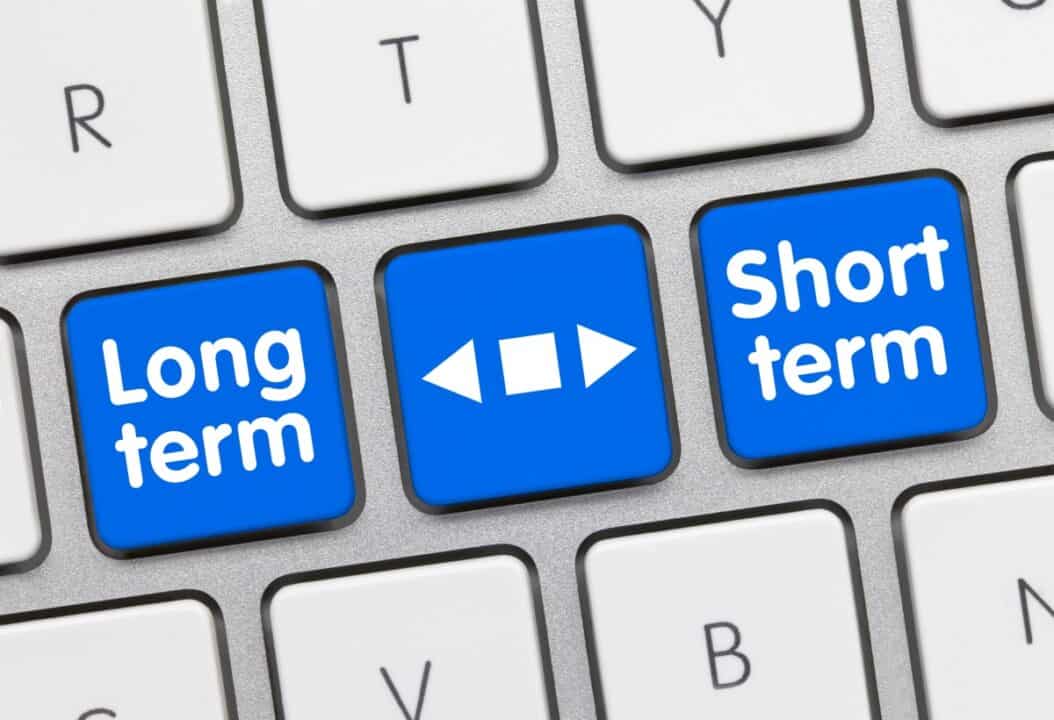Investing in stocks can earn an investor huge returns. This has made countless investors trade in the stock market. However, just like other economic sectors, the stock market has its risks and uncertainties. Stock prices may fluctuate more rapidly due to several factors. Without a proper strategy, you may end up with a negative value in your stock’s account.
Then, can you have negative money in stocks? No, you can’t have negative money in stocks. Despite the stock prices fluctuating, your money can not reach a negative value (check out ‘How Often Should I Check My Stocks?‘ to avoid such a scenario). But, your book value can assume a negative value. This will prompt you to lose more funds than what you invested and might result in an increase in debts.
The phenomenon of losing money in stocks is common. You, therefore, need to have a solid strategy – look at ‘Fundamental vs Technical Analysis‘ – in place to curb such scenarios. Let us find out more.

How Can You Owe Money on Stocks?
There are various ways you can end up owing money on stocks. For instance, if a company goes bankrupt, its stock’s value will depreciate and may reach a zero value. This means the company will have no funds to pay its creditors. What does this mean to the investors? Investors who are stockholders in that company won’t be compensated. The lack of compensation will lead to the investors losing their investments as their stocks become worthless (see also ‘What Does Liquid Net Worth Mean?‘).
You may also owe money on stocks if you trade (see on a margin account. These accounts allow investors to buy stock shares worth more than what they have. The investor can pay 50% of the stock shares and fund the remaining 50% using debt. The broker funds you with 50% of your account value. This means that if you have $20,000 in your account, the broker will fund you up to $10,000.
What Is a Margin Account, and How Does It Work in the Stock Market?
A margin account is a stock account that allows investors to buy stocks, funding 50% of the stock shares with cash and 50% by debt. The broker lends the investor 50% of the value of their accounts. This means you’ll be essentially borrowing money to fund your trade.

An investor who wants to buy stock shares worth $200 will pay $100 in cash. The broker will cater for the remaining $100. As soon as the broker loans you the funds, interests start increasing on the funds.
Problems arise when your stock value falls, like in a case of a stock market crisis (see ‘How to Take Advantage of Stock Market Crash‘). Nonetheless, if you bought the $200 stock shares and their value drops to $80, you may incur losses. Regardless of the stock price fluctuation, the amount you owe the broker remains constant. Therefore, if you sell these stock shares at $80, you’ll incur a $120 loss. However, you still owe the broker $100. You’ll need to use your own money worth $20 to repay the borrowed money. Don’t forget about the interest, though. and that’s how you end up owing money on stocks.
You may get a margin call from the broker. The Financial Industry Regulatory Authority requires all investors to have not less than 25% of their Investment as a margin. However, this value can go higher depending on your broker. If your stock value drops beyond this value, they may need you to invest more funds into your account or liquidate your shares investment.
Can a Short Sale Cause You to Owe Money on Stocks?
Yes, a short sale can cause you to lose money. This occurs when you lend a stock or funds to purchase the stock from a broker, including a sell order (see if you can sell on weekends when the physical stock market is closed). That means you are obliged to repurchase it in the future.
The short sale can cause you to lose more money than what you invested. If you run low on the stocks, this loss can happen, and they instantly shoot by 100% or more. This scenario is common in stocks of companies that aren’t performing well.
The short sale strategy works in a reverse way. The investor buys or borrows funds to buy stock shares from a broker, expecting the stock prices to drop. However, the reverse can also happen so that the stock prices shoot up. If the prices rise by more than 100%, you’ll lose all the money you invested and you’ll have a debt to pay the broker.

Which Stocks Can Result in Debts?
The stock market – see ‘Stock Market Investing for Beginners‘ – is not a stable venture. There may be frequent fluctuations in prices. When this fluctuation happens, investors lose funds. However, stocks vary in their level of risk. Some have higher risks than others, leading to more cases of losing investments. For instance, stocks of poorly managed companies and penny stocks have higher risks than other stocks.
Let’s take a look at each of them.
Penny Stocks
Penny stocks and other stocks with low prices are flexible to invest in. Investing in these stocks can make you rip higher returns over time. However, they experience rapid price fluctuations and volatility (see swing trading strategies). They incorporate all stocks trading under $5, although in the past, penny stocks were stocks trading at $1.
Penny stocks trade under the pink sheet system and on over-the-counter markets. Companies involved have insignificant profits on capital investments. These stocks experience more scams, and their value can fall beyond zero. When any of these uncertainties happen, the investor stands to lose his funds and may owe money.
Stocks of Companies With a Poor Management Structure
It is very risky to invest in the stocks of a poorly managed company. The stocks of these companies can fall drastically and can even reach a zero value. In case a company runs bankrupt, the investors risk losing their shares in the company’s stocks. To cushion your capital investment against these risks, it’s crucial to understand the companies structure and operations before investing in its stock.
A bankruptcy situation doesn’t necessarily mean the company will lose its stock value to zero. There are established strategies that companies use to leverage their stocks. If the company trades its stock for less than $1 for more than one month, stock exchanges will delist this stock. The resultant effect is that investors with shares in this stock will lose their funds.
Companies with low stock prices will try to leverage themselves by applying reverse stock split. This involves lowering outstanding shares by consolidating.

How Can You Protect Your Investment?
Despite regulatory bodies coming up with strategies to curb the loss of money through borrowing, cases of investors losing more funds than what they invested are still rampant. The stock market is uncertain and keeps on changing – learn more on how to read the stock market reports.
To achieve your target and goals, you need to set up investment strategies to protect your capital investment against risks. Below are some of the tips you can consider to help protect your funds.
Consider Stock Diversification
Stock diversification spreads the risks that may face the stock. By doing so, you reduce the risk that comes from investing in a single stock. If one stock fails to perform, you will not lose everything because you have other stocks. Diversify your stocks by buying stocks from different economic fields, buy an index fund, government bonds, or real estate stocks.
Consider Using a Stop-Loss Order
The stop-loss order helps you protect your investment from rapid price fluctuations. They do so by introducing a cap on the funds you can lose. Beyond this cap, your trade will be upheld until when the prices become favorable. An example is the trailing stop order which allows your stock to trade when prices are higher (see also day trading in Canada). It will remain at the highest tally when the stock’s price drops down.
Shift From Short-Term Investment Strategy to Long-Term Investment
Both short-term stock investment and long-term Investment have benefits. While you can rip considerable returns on short-term investment, that isn’t the case regularly. There are market dips that occur in-between days that have a significant effect on a short-term investment. Shifting to long-term investment will cushion your investment against the dips that occur in-between days. This will reduce the chances of losing your funds.

The Bottom Line
Stock trading – see also ‘Day Trading for Beginners’– a great way to appreciate your capital. When you invest, you expect your capital to appreciate in value so that you may yield more returns. However, this is not always the case. Once in a while, you may incur losses on your capital investment.
Cash account, preferred mainly by new investors, has lower risks of fund losses. On the other hand, investing through margin accounts involves higher risks of fund losses. You may end up losing more than what you invested, such that you owe money on stocks. The same applies to short sales.
You are, therefore, supposed to have a strategic plan when investing in the stock market. Know what you can invest in and the risks you are ready to concede without affecting your investment performance.